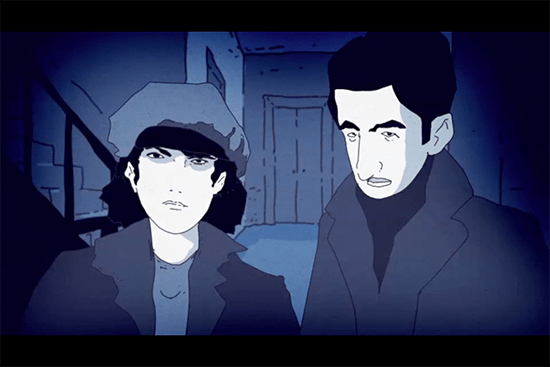POLIN Museum Debuts Short Film on Warsaw Ghetto Uprising

POLIN Museum of the History of Polish Jews premiered an original short film about the Warsaw Ghetto Uprising featuring testimony from the Visual History Archive on the 73rd anniversary of the uprising.
Within the framework of the Jewish Cultural Heritage project and the annual Daffodils Social and Educational Campaign organized by POLIN Museum of the History of Polish Jews to commemorate the 73rd anniversary of the 1943 Warsaw Ghetto Uprising in 2016, POLIN produced an animated documentary film There Was No Hope which premiered April 19, 2016.
The 30-minute film was produced under the supervision of historian Dr. Agnieszka Haska and methodologists Robert Szuchta and Monika Koszyńska, who is USC Shoah Foundation’s regional consultant in Poland.
The museum estimates that 200,000 students have watched the film so far.
The film covers life in Warsaw before World War II, the history of the Warsaw Ghetto, the Warsaw Ghetto Uprising, and memorialization of the Holocaust today. The film is based on the true stories of uprising participants Kazik Ratajzer, Marek Edelman, Tosia Altman, Cywia Lubetkin and Mordechaj Anielelewicz and is partly animated to depict their experiences during the war.
The film also includes clips from the Visual History Archive testimonies of Maria Szarach (Jewish Survivor), David Jakubowski (Jewish Survivor), Maria Gorska, (Rescuer and Aid Provider), Janina Bauman (Jewish Survivor), and Maria Berland (Jewish Survivor). Archival footage is provided by United States Holocaust Memorial Museum, Filmoteka Narodowa (Polish National Film Archive), Polish Television, POLIN Museum of History of Polish Jews, Polish Center for Holocaust Research and Warsaw Uprising Museum.
The film premiered on Polish TV on April 19 and is also available on the POLIN website. POLIN has produced an educational guide for the film, also available on the website, to aid teachers in introducing and contextualizing the film for their students.
On April 19, the president of Poland Andrzej Duda, prime minister Beata Szydło, the mayor of Warsaw Hanna Gronkiewicz-Waltz, ambassadors of the United States, Israel and other diplomats together with hundreds of ordinary citizens of Warsaw came to the Warsaw Ghetto Fighters Monument in front of POLIN The Museum of the History of Polish Jews to honor those who had no hope but decided to die fighting. In his speech, President Duda talked about young Polish Jews who fought in an unequal battle for their dignity and had no chance to win, and how important it is to remember their struggle.
Mayor Hanna Gronkiewicz-Waltz spoke about the legacy that Ghetto Fighters left to all of us – the legacy of fighting for human rights and against racism. Gronkiewicz-Waltz recalled the scandalous behavior of young neo-fascists who six months ago burned an effigy of stereotypical Jews in front of the Wrocław mayor’s office, and the march of a group of a few hundred young neo-fascists in Białystok last Sunday. The march ended in Białystok Cathedral at the mass led by an extreme-right priest who said that everybody who is not Catholic is a cancer on the Polish body. She said that not one Polish politician openly protested against it so far.
At the same time, thousands of volunteers went to Warsaw’s streets and distributed paper daffodils symbolizing the ghetto fighters. More than 1,200 Polish schools joined the campaign all over Poland.
A frequent partner of USC Shoah Foundation in Poland, POLIN is a full access site of the Visual History Archive and regularly hosts workshops for educators and students on using testimony in the classroom.
Photos courtesy POLIN